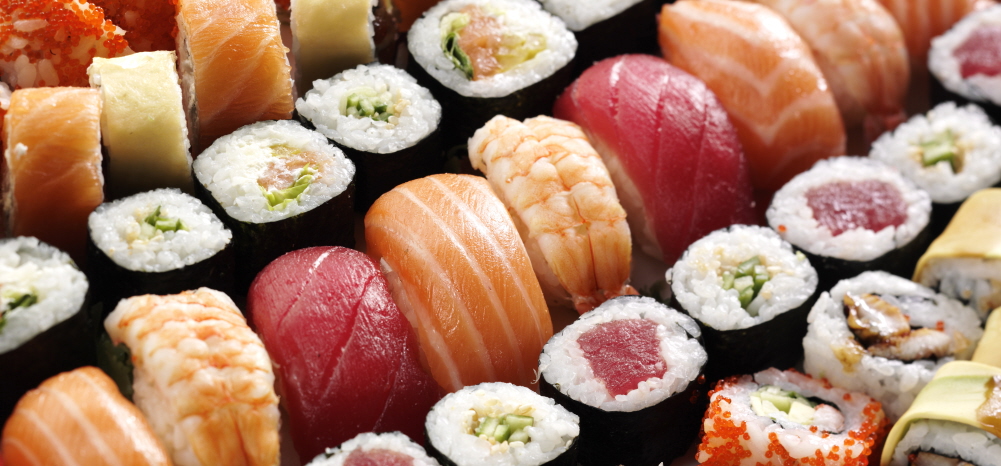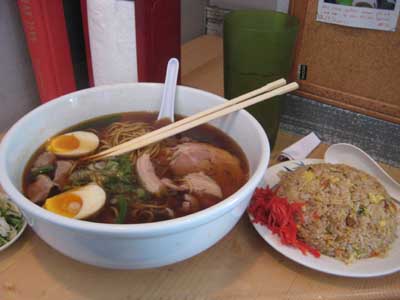
Erin and I had dinner tonight at a restaurant we hadn’t visited in a couple of years — it’s been too long. Peking-Tokyo Restaurant is located in the southern part of the suburb of Lakewood, across town from where we live. Back a decade ago, when we both worked a few blocks from Peking-Tokyo Express, as it was called, we ate there often. It had an interesting menu of Chinese, Vietnamese and Thai dishes. Despite its name, there were only a couple of token Japanese items on the menu (the name was a holdover from the business’ previous owners).
Erin’s favorite was a noodle soup with two kinds of noodles, the Vietnamese rice noodles that are now familiar to fans of Pho (but this was before Pho was as common and popular as it is now) and thin egg noodles like the kind you might see in Chinese lo mein, or Japanese ramen. The soup is topped off with slices of chashu pork, shrimp, chicken and chunks of crab.
My favorite was bun dac biet, a combination of grilled meat served on top of cold rice noodles, lettuce and cucumbers with a side of vinegary fish sauce. The meat includes pork, chicken, beef and shrimp, and an incredible and unique treat: a stuffed grilled chicken wing, plump with pork, flavorings and clear noodles.
We usually ordered Vietnamese spring rolls for appetizers, and I’d usually order Thai iced coffee or ice tea as an energy drink before such things as Red Bull existed. We’ve tried both the Thai and Chinese food there too, and the flavor is full and the servings substantial. But both our favorite dishes are so superior that after a while it was hard to order anything else.
We liked he place so much that we got our friend John Lehndorff at the Rocky Mountain News to go and review Peking-Tokyo Express.
We learned the story of the family, the Wangs, who own the restaurant. We got to know one of the daughters, Melissa, and one of the sons, Tommy. I had assumed they were Vietnamese, but it turns out they’re ethnic Chinese. Tommy and Melissa’s grandparents had moved to Vietnam decades ago, but the family got caught up in the turmoil of the Vietnam war and ended up coming to the US with the Vietnamese “boat people” refugees in the late ’70s, when Melissa was a baby. Tommy told us the heartbreaking story of their Aunt, who was murdered by Cambodian pirates as the family escaped Vietnam.
Continue reading →







 Hot stuff: Orochon Ramen lets you choose your level of heat. I opted for #3 and it was pretty damned warm.
Hot stuff: Orochon Ramen lets you choose your level of heat. I opted for #3 and it was pretty damned warm.





